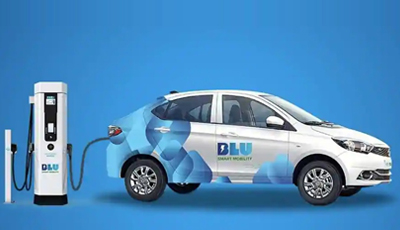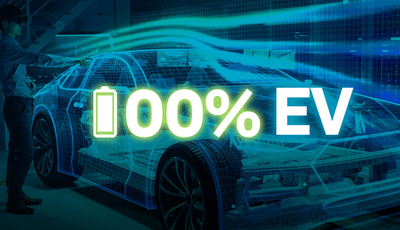The Motor is the source of power for Electric Vehicle. It determines top speed, acceleration, hill climbing ability, power consumption and vehicle performance.
Three Important points to consider when finalising choice of Electric Motor are:
- Vehicle characteristics
Vehicle weight, overload and aerodynamics help determine speed, torque and power requirements of the electric motor.
- Driving cycle:
Driving cycle consideration of various factors like traffic density, terrain, temperature, etc influence size of battery pack size and choice of powertrain
- Maximum speed:
To factor in motor speed, maximum speed of vehicle needs to considered. How long speed need to be sustained, differential ratio and wheel radius also influence motor selection.
Desirable consideration factors for selecting most suitable Electric Motor are:
|
Power to Weight Ratio |
Higher Power to Weight ratio provides Higher speed and acceleration |
|
Power Density |
Higher Power density helps minimize space utilisation (compactness) for highest possible power output |
|
Efficiency |
Higher motor efficiency means less energy losses and more usable mechanical energy |
|
Peak Power Output |
Maximum power that Motor can sustain for short duration |
Electric vehicle performance directly depends on performance of Electric Motor. The performance of the motor is determined by Torque-Speed and Power-Speed characteristic of the traction motor
Selecting the proper output characteristic of an EV motor is a challenge because it is necessary to find the balance between acceleration performance and wide speed range in the constant power region.
The constant torque operating region is important at low speed to provide a good start and up-hill drive. The constant power region determines maximum speed on flat surface.
The rotor is the moving part, which turns the shaft that delivers mechanical power. The rotor is supported by bearings which support it to turn on its axis, the windings form magnetic poles when energized with current and stator is the stationary part.
Types of Motors in Use in EV’s :
|
BLDC |
PMSM |
|
Brushless DC Motor |
Permanent Magnet Synchronous Motor |
| |
|
|
BLDC motor is basically a DC motor turned inside out which means the coil is on the outside and magnets are on the inside. |
PMSM uses permanent magnets embedded in the rotor to create a constant magnetic field.
|
|
BLDC motors have a rotor with permanent magnets and a stator with windings. The windings are energized in a specific sequence to create a rotating magnetic field, which causes the rotor to turn. The electronic commutation of the motor allows for precise control of the motor’s speed and direction. |
PMSM motors also have a rotor with permanent magnets and a stator with windings. The main difference is that the windings are designed to produce a sinusoidal magnetic field, which interacts with the permanent magnets to generate torque. This design allows for a higher power density than BLDC motors. |
|
High Efficiency |
Higher efficiency (Permanent magnets in a PMSM motor create a stronger magnetic field producing more torque per ampere of current) |
Mounting position of Motor:
|
Hub Motor |
Mid Drive Motor |
|
|
|
|
The hub motor is incorporated into the hub of a wheel and drives it directly |
Mid drive motor powers the cranks and sends force through drivetrain |
|
Since motor is mounted directly on hub it creates uneven weight distribution |
Centre of gravity is maintained in the centre resulting in better stability |
Reduction of Rare Earth Materials:
In electric motors, magnets are used to generate rotation using electrical current passing through loops of wire. These magnets are typically made with rare-earth materials such as neodymium and dysprosium, which have a very geographically constrained supply chain. China accounts for vast majority of rare-earth production worldwide leading to huge price volatility.
Apart from cost and availability problems, these materials arouse also important environmental, political and ethical issues regarding their extraction, trade and disposal.
Motor designs that avoid use of rare earth elements are being developed requiring higher levels of optimisation of motor with controller.
Recent developments include spoke rotor PMSM that uses ferrite magnets with a similar or better power density than an equivalent induction motor. Other innovations include utilizing wound rotor configuration to replace magnets with copper windings, aluminium rotor induction motor and switched reluctance motors which require no magnets or copper in the rotors.
Synchronous Reluctance Motors:
|
|
The main characteristics of synchronous reluctance motor are high efficiency at synchronous speed without using rare earth permanent magnets. There is no concern of demagnetisation, so these are inherently more reliable than permanent magnet motors
|
The main advantage of synchronous reluctance motors is negligible rotor losses. Reduced heat in synchronous reluctance motors improves torque and power densities allowing them to be sized smaller for a given rating. These motors are also quiet due to low torque ripple and vibration levels.
Future Trends:
Increasing Efficiency
Efficiency is a critical factor in electric motors and future developments are likely to focus on increasing efficiency further. This could involve the use of new materials, improved design, and more advanced control algorithms.
Integration with IoT
Higher integration with IoT systems, allowing for remote monitoring, control, and optimization.
Design Evolution
There is movement toward non-traditional designs because of increased demands for:
- Higher torque density
- More efficient cooling (motor)
- Reduced size of the motor
- Optimized or reduced use of copper wire and magnet material.
Customized Energy Solutions closely works with several leading Motor manufacturers and OEM’s to support in design and recommendation of best suited motors delivering optimum performance for your Powertrain applications.








 Policy & Regulatory Advocacy
Policy & Regulatory Advocacy






